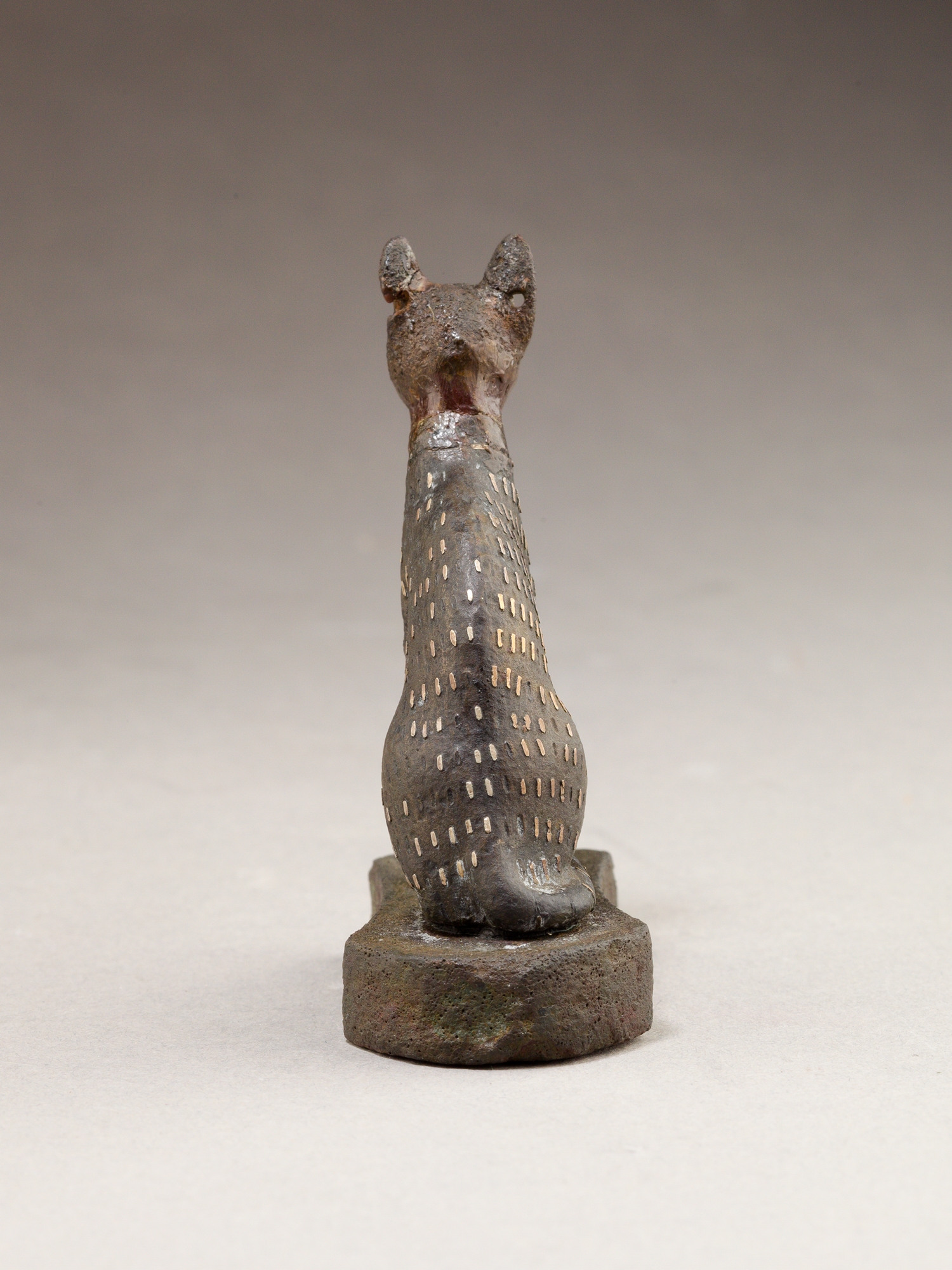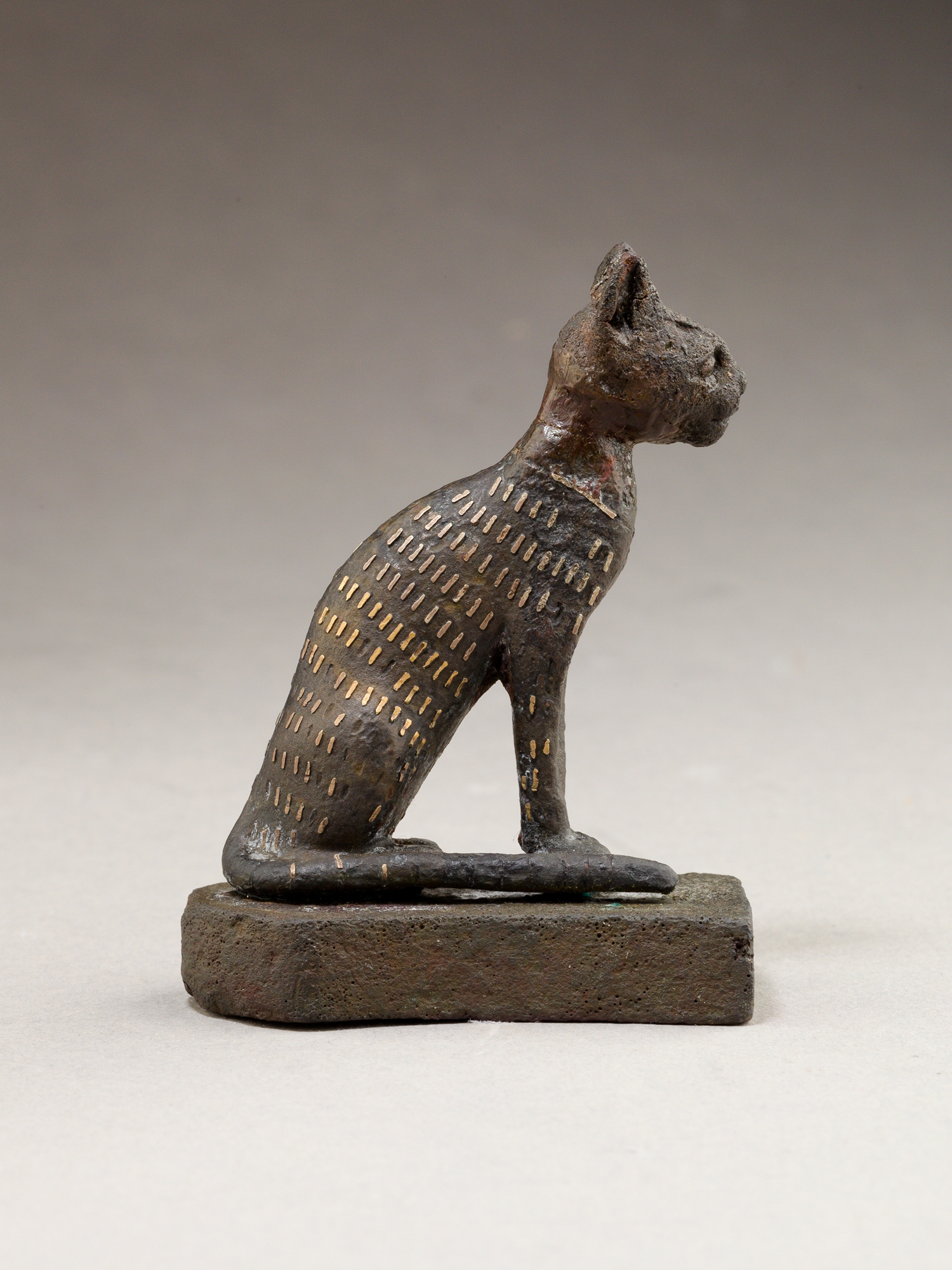Cat
Late Period–Ptolemaic Period
Bastet was a powerful goddess of Lower Egypt, one who was protective and could bring about great prosperity. In zoomorphic form, she was represented as a cat and cats were considered sacred to her. This cat sits on a menat-shaped base in a typical pose, upright with its tail wrapped along its right side. It is poised and alert, on guard against external forces.
This small figure is exceptional because of the level of detail and attention that went into its manufacture. It has many of the same features as other seated cats: it wears an amulet, its fur is indicated by short repeated markings, and it has a ringed tail. On this example, however, these features are picked out in gold, which gives it a striking appearance. This piece also gives us insight into the mentality of those who dedicated such objects; it shows that even small statuettes were considered important and worthy of elaboration and extra cost. Dedications did not always have to be large to be significant or impressive.
Cat statuettes were among some of the most common zoomorphic dedications of the Late and Ptolemaic Periods. Small statuettes like this one would have been dedicated as offerings to temples or deposited in catacombs alongside cat mummies, as at the extensive catacombs at Bubastis and Saqqara. Sometimes larger hollow examples held a cat mummy inside.
Due to rights restrictions, this image cannot be enlarged, viewed at full screen, or downloaded.
This artwork is meant to be viewed from right to left. Scroll left to view more.





